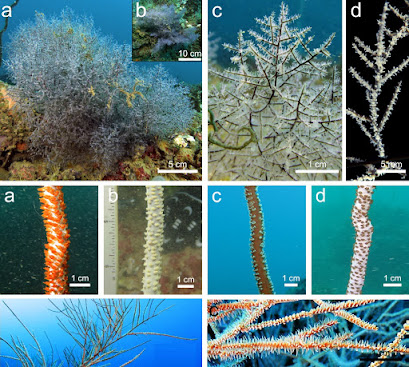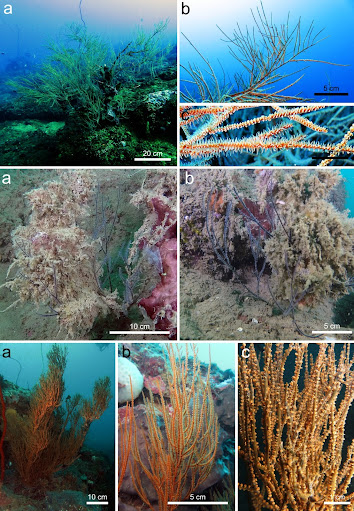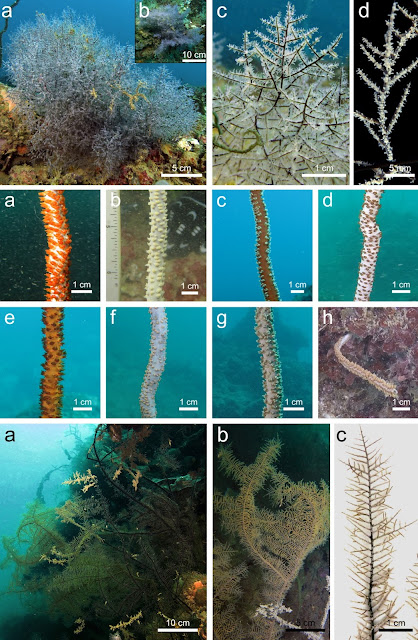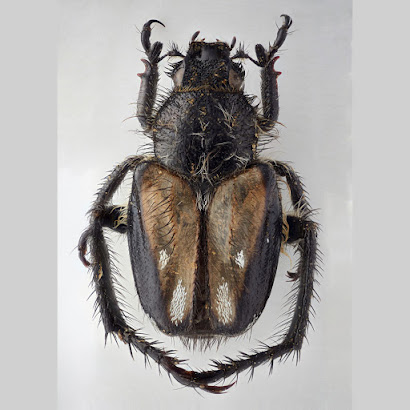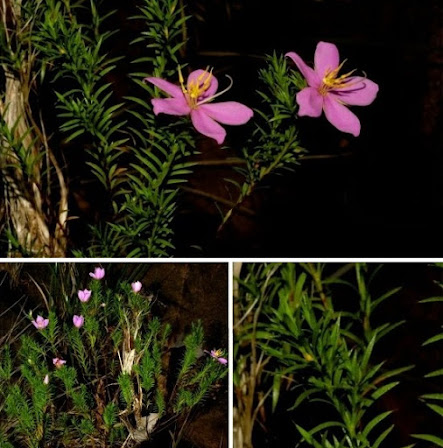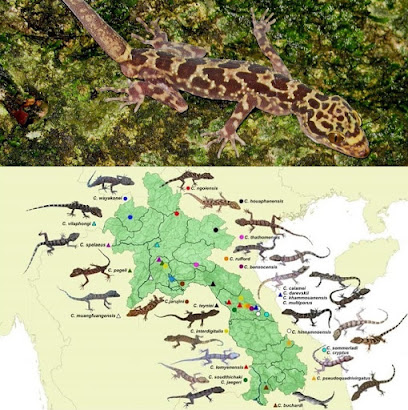[Most Recent Entries] [Calendar View]
Monday, August 10th, 2020
| Time | Event | ||
| 3:36a | [Cnidaria • 2020] Shallow-water Black Corals (Anthozoa: Hexacorallia: Antipatharia) from SW Madagascar
Abstract Antipatharians, also known as black corals, represent a small group of anthozoan hexacorallians found in all oceans of the world. They are generally considered a deep-water taxon; however, some of the most diverse communities are known from tropical shallow waters. With a few poorly detailed exceptions, shallow-water black corals from the Indian Ocean and especially those from Madagascar are mostly unknown. In this study, we report for the first time a highly diverse black coral assemblage of the Western Indian Ocean thriving in shallow waters and upper mesophotic depths (10–52 m depth) along the SW coast of Madagascar. A total of 22 species belonging to six genera (Antipathes, Arachnopathes, Cirrhipathes, Cupressopathes, Myriopathes and Stichopathes) and two families (Antipathidae and Myriopathidae) are described, of which 20 are found in the northern pass of the Great Reef of Toliara, thus representing the most diverse site of the areas investigated. Most of the shallow-water species from the Indian Ocean were originally described more than a century ago, sometimes without being reported again until now. All the descriptions herein rely solely on morphology and include detailed in situ pictures and scanning electron microscope images, in addition to range expansions for many species. Keywords: Animalia, Antipathidae, Myriopathidae, Indian Ocean, taxonomy, Toliara Family Antipathidae Ehrenberg, 1834 Genus Antipathes Pallas, 1766 Antipathes flabellum Pallas, 1766 Genus Arachnopathes Milne Edwards, 1857 Arachnopathes ericoides (Pallas, 1766) Genus Cirrhipathes de Blainville, 1834 Cirrhipathes anguina (Dana, 1846) Genus Stichopathes Brook, 1889 Stichopathes cf. diversa (Brook, 1889) Family Myriopathidae Opresko, 2001 Genus Myriopathes Opresko, 2001 Myriopathes cf. myriophylla (Pallas, 1766) Genus Cupressopathes Opresko, 2001 Cupressopathes abies (Linnaeus, 1758) Lucas Terrana, Marzia Bo, Dennis M. Opresko and Igor Eeckhaut. 2020. Shallow-water Black Corals (Cnidaria: Anthozoa: Hexacorallia: Antipatharia) from SW Madagascar. Zootaxa. 4826(1); 1-62. DOI: 10.11646/zootaxa.4826.1.1 | ||
| 3:58a | [Entomology • 2020] Review of the Genus Beckhoplia Dombrow, 2005 (Coleoptera: Scarabaeidae: Melolonthinae: Hopliini) with the Description of Fifteen New Species from South Africa and Observations on Its Biogeography
Abstract Keywords: Coleoptera, Greater Cape Floristic Region, monkey beetles, Northern Cape Province, taxonomy, Western Cape Province Holger E. Dombrow and Jonathan F. Colville. 2020. Review of the Genus Beckhoplia Dombrow, 2005 with the Description of Fifteen New Species from South Africa and Observations on Its Biogeography (Coleoptera: Scarabaeidae: Melolonthinae: Hopliini). Zootaxa. 4823(1); 1-64. DOI: 10.11646/zootaxa.4823.1.1 | ||
| 4:41a | [Botany • 2020] Microlicia windischii • A New Species of Microlicia (Melastomataceae) from Bolivia and Brazil, A New Synonym, and An Identification Key for the Genus in Mato Grosso, Brazil
Abstract Keywords: Bolivian Cerrado, endemism, Huanchaca, Microlicieae, Neotropics, Noel Kempff Mercado National Park, Serra Ricardo Franco, Eudicots Microlicia windischii Ana Flávia Alves Versiane, Diego Nunes da Silva and Rosana Romero. 2020. A New Species of Microlicia (Melastomataceae) from Bolivia and Brazil, A New Synonym, and An Identification Key for the Genus in Mato Grosso, Brazil. Phytotaxa. 455(1); 9–20. DOI: 10.11646/phytotaxa.455.1.2 | ||
| 10:31a | [Herpetology • 2020] Cyrtodactylus houaphanensis & C. ngoiensis • Two New Species of Cyrtodactylus (Squamata: Gekkonidae) from northern Laos, including New Finding and Expanded Diagnosis of C. bansocensis
Abstract Two new Cyrtodactylus species are described from Houaphan and Luang Prabang provinces in Laos based on morphological and molecular data. Cyrtodactylus houaphanensis sp. nov. differs from all other Cyrtodactylus in the C. wayakonei species group by at least 3.3 % genetic divergence in the COI gene and can be diagnosed in morphology as follows: SVL 75.8 mm; supralabials 9 or 10; infralabials 8 or 9; ventral scales 35; dorsal tubercles in 20 rows at midbody; precloacal pores 6 in the male; femoral pores absent; subcaudals enlarged; five irregular, brown bands between limb insertions. The new species morphologically resembles C. chauquangensis and revealed to be a sister taxon to C. puhuensis according to our genetic analyses, from which it mainly differs in the absence of enlarged femoral scales. Cyrtodactylus ngoiensis sp. nov. differs from other closely related congeners by at least 11.6 % genetic divergence in the COI gene and can be diagnosed in morphology as follows: maximum SVL 95.3 mm; supralabials 6–9; infralabials 8–11; ventral scales 38–43; dorsal tubercles in 15–21 rows at midbody; enlarged femoral scales present; precloacal pores 7 in the male, 7 pitted scales in females; femoral pores 14 in the male, absent in females; five bright yellowish transverse dorsal bands; subcaudals enlarged. The new species is shown to be a member of the C. wayakonei species group, but morphologically resembles C. dumnuii from Thailand. According to our phylogenetic analyses, it is a basal taxon to a clade comprising C. spelaeus, C. chauquangensis, C. vilaphongi, C. cucphuongensis, C. puhuensis, C. houaphanensis, C. otai and C. bobrovi. Based on a new record of C. bansocensis from central Laos, which represents the first recorded female we provide a redescription of C. bansocensis including expanded diagnosis. In addition, an updated identification key for the Cyrtodactylus known from Laos is provided. Keywords: Reptilia, Cyrtodactylus houaphanensis sp. nov., Cyrtodactylus ngoiensis sp. nov., C. bansocensis, molecular phylogeny, new record, taxonomy, Houaphan Province, Khammouane Province, Luang Prabang Province Nicole Schneider, Vinh Quang Luu, Saly Sitthivong, Alexandre Teynié, Minh Duc Le, Truong Quang Nguyen and Thomas Ziegler. 2020. Two New Species of Cyrtodactylus (Squamata: Gekkonidae) from northern Laos, including New Finding and Expanded Diagnosis of C. bansocensis. Zootaxa. 4822(4); 503–530. DOI: 10.11646/zootaxa.4822.4.3 |
| << Previous Day |
2020/08/10 [Calendar] |
Next Day >> |
